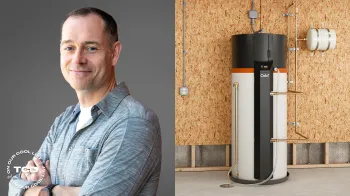Since its invention, plastic has become a growing part of human life and infrastructure.
But one expert — with research revealing how microplastics could be contributing to human health issues — explained the construction industry needs to take some responsibility.
What's happening?
Professor Joanne Kwan, a senior research manager and sustainable land reuse lead at the Construction Industry Research and Information Association, told PBC Today that construction could be a key source of microplastic pollution.
"The impacts of microplastics generated in the construction sector are significant," Kwan said.
Plastic is commonly used in pipes, doors, flooring, and many more common building and construction materials. In fact, Kwan noted that the Considerate Constructors Scheme found that the industry consumes 20% of all plastic, making it the second-largest consumer of the material.
The more plastics we use, the more microplastics are released. With construction relying heavily on the material, Kwan suggested that professionals need to analyze the use of it in their projects and manage it more effectively.
Watch now: How bad is a gas stove for your home's indoor air quality?
Why are microplastics concerning?
Microplastics can be inhaled, ingested through water, and even absorbed through the skin. Eating crustaceans or other species that have microplastics in their bodies can also allow these pollutants to enter the human digestive system.
One study, published in the journal Heliyon and shared by Cell.com, suggested a link between microplastics in blood vessels and cardiovascular disease. Meanwhile, research outlined in the Science of the Total Environment journal, shared by Science Direct, noted some microplastics are endocrine disruptors.
"[Construction] workers exposed to high levels of plastic dust suffer chronic inflammation of the airway and, in some cases, interstitial lung disease and tissue scarring," Kwan said.
These studies suggest that microplastics can have lasting effects on human health and the health of other species.
TCD Picks » Quince Spotlight

|
Do you worry about the quality of the air inside your home? Click your choice to see results and speak your mind. |
What's being done about microplastics?
At the moment, information on how we can best deal with microplastics is preliminary, but scientists are working on ways to remove them from our water supplies.
But in order to effectively reduce microplastic pollution in the long term, we need to look at alternatives to single-use plastics, which are difficult to recycle and often end up in the environment.
For the construction industry, Kwan noted that more information is needed on "how much microplastic is generated from construction projects; this includes developing good practices in sampling and analysis of microplastics in air, soil, and water."
This could help inform better management practices to reduce the pollution the industry creates.
CIRIA has launched a project on microplastics in construction that will analyze best practices and determine what new or additional measures should be taken.
The goal is to significantly reduce the production and spread of microplastics in construction, which would be a major step forward for microplastic reduction as a whole.
Join our free newsletter for weekly updates on the latest innovations improving our lives and shaping our future, and don't miss this cool list of easy ways to help yourself while helping the planet.

















